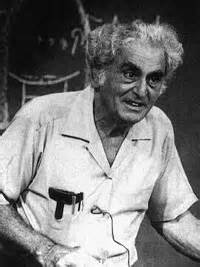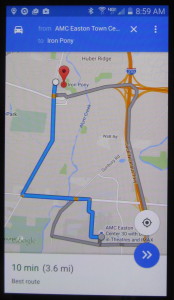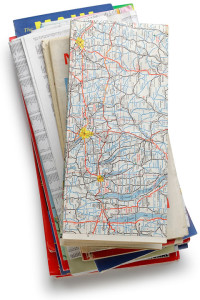 Happy poetry month! I was pleased to see Ted Kooser, former US Poet Laureate featured on Garrison Keillor’s Writer’s Almanac as it began a month of presenting a poem and a poet each day. A blurb form the new York Times on the back of his Pulitzer Prize winning book, Delights & Shadows, states that Kooser has a “genius for making the ordinary sacramental.” Agreed.
Happy poetry month! I was pleased to see Ted Kooser, former US Poet Laureate featured on Garrison Keillor’s Writer’s Almanac as it began a month of presenting a poem and a poet each day. A blurb form the new York Times on the back of his Pulitzer Prize winning book, Delights & Shadows, states that Kooser has a “genius for making the ordinary sacramental.” Agreed.
I had the pleasure of conversation with Ted Kooser one Saturday afternoon. We were both at a writing conference: He was the keynote and a workshop leader. I was carrying a couple of manuscripts hoping to meet with an editor and agent. It’s a long story, but suffice it to say that I left a workshop to meet with an editor who didn’t show up (not her fault really. A scheduling mix-up). When I tried to return, the door had been closed and locked. So, there I was, wondering what to do next when I spotted Ted Kooser, sitting alone in the lobby. Turns out he was waiting for a ride to the airport.
I needed about two seconds to decide what I would do–introduce myself to the poet laureate and see what happened. We had a wonderful conversation, talking about a variety of things including teaching poetry and how terribly it was done in most schools. I told him of my practice of reading poetry to my class of adult GED students every day. Most of them were abused, victims of domestic violence, and single mothers. They loved poetry and filled journals with their own, finding it a way to deal with deep hurts and emotions.
Poem in the mail
 During one of his presentations he had made the generous offer of sending a valentine poem to anyone who’d like to receive one. He’d been doing it for years, he explained. I gave him my daughters’s address and my own. Sure enough, when Valentine’s Day came around we both received a postcard from Ted Kooser, postmarked in Valentine, Nebraska. It hangs, framed on my office wall.
During one of his presentations he had made the generous offer of sending a valentine poem to anyone who’d like to receive one. He’d been doing it for years, he explained. I gave him my daughters’s address and my own. Sure enough, when Valentine’s Day came around we both received a postcard from Ted Kooser, postmarked in Valentine, Nebraska. It hangs, framed on my office wall.
“You revised that how many times?”
The following year, Ted Kooser gave a poetry reading at a nearby college. I offered to make the hour and a half drive, taking students who would like to go. We needed two cars and made an long night of it, starting with an early dinner. I bought them each a book of his poetry, and we arrived early enough to find great seats in the small auditorium.
He was delightful, and the audience was entranced. I’ll be forever grateful for his answer to one student’s question: “How many times did you revise that poem?” she asked, referring to a short one she particularly liked. “Oh, about 50 times, at least,” he said without a moment’s thought. All my students turned and looked at me, mouths hanging open. Suddenly, my insisting that they revise their writing a few times before moving on seemed reasonable. I never had another complaint.
He signed their books and smiled as I took a group photo while the long line of others, books in hand, had to wait. We ended the evening at a coffee shop in the small college town, sipping tea, munching cookies, sharing poetry, and excited conversation.
A poem a day
Treat yourself. Read a poem a day. There are plenty of online sites The Writer’s Almanac is a good place to start, or you might want to sample some of Ted Kooser’s work: a great way to observe a month celebrating Poetry. Treat yourself. Read some of Ted Kooser’s work: a great way to observe a month celebrating Poetry.


 My day was off to a confused start. It was the time change. Usually, the clock by my bed adjusts for moving into or out of daylight savings time, but not this morning. Or maybe I just read it wrong. I hurried, washed my hair, and drove to church. No one was there. That’s when I realized: Daylight savings time was back. Sigh. Not a fan.
My day was off to a confused start. It was the time change. Usually, the clock by my bed adjusts for moving into or out of daylight savings time, but not this morning. Or maybe I just read it wrong. I hurried, washed my hair, and drove to church. No one was there. That’s when I realized: Daylight savings time was back. Sigh. Not a fan.


 Bright sun was a welcome change from the grey overcast days we’d been having. I hurried along the sidewalk, passing upscale condos along the street adjacent to the downtown parking lot where my car waits everyday while I’m at work. The brown sandstone cathedral sits just across the street. I thought about dropping in, but opted for the church of buildings and people, cars and cracked sidewalks instead. The cathedral would be locked anyway.
Bright sun was a welcome change from the grey overcast days we’d been having. I hurried along the sidewalk, passing upscale condos along the street adjacent to the downtown parking lot where my car waits everyday while I’m at work. The brown sandstone cathedral sits just across the street. I thought about dropping in, but opted for the church of buildings and people, cars and cracked sidewalks instead. The cathedral would be locked anyway.
 “My name is Julius Sumner Miller, and physics is my business.” That’s how he opened every show. Physics was his business. So was wonder.
“My name is Julius Sumner Miller, and physics is my business.” That’s how he opened every show. Physics was his business. So was wonder.











 Life is like that, too. I don’t have the big picture. I may think I do, but really, I don’t. Making choices, pursuing one path instead of others, or doing nothing can lead to unrecognized places. Sometimes, the journey, full of twists and turns and takes me where I don’t want to go.
Life is like that, too. I don’t have the big picture. I may think I do, but really, I don’t. Making choices, pursuing one path instead of others, or doing nothing can lead to unrecognized places. Sometimes, the journey, full of twists and turns and takes me where I don’t want to go.